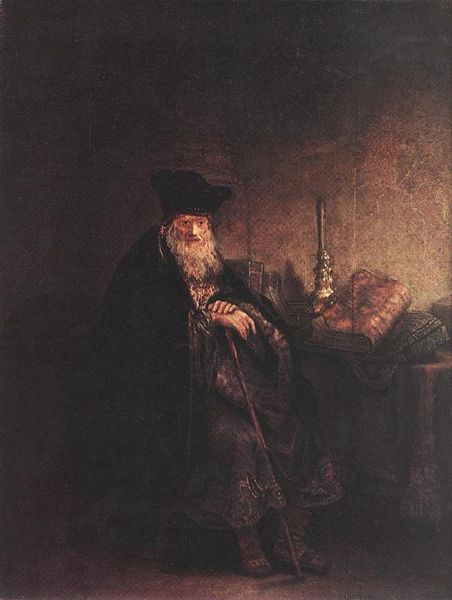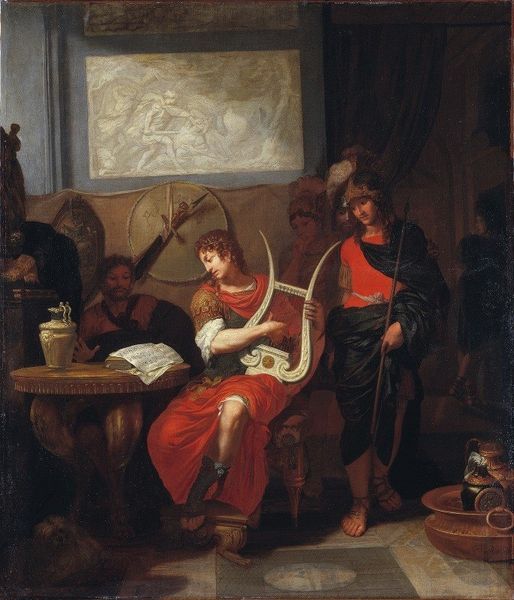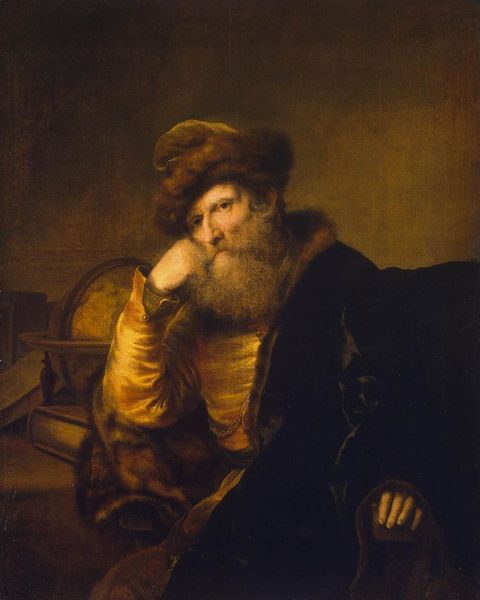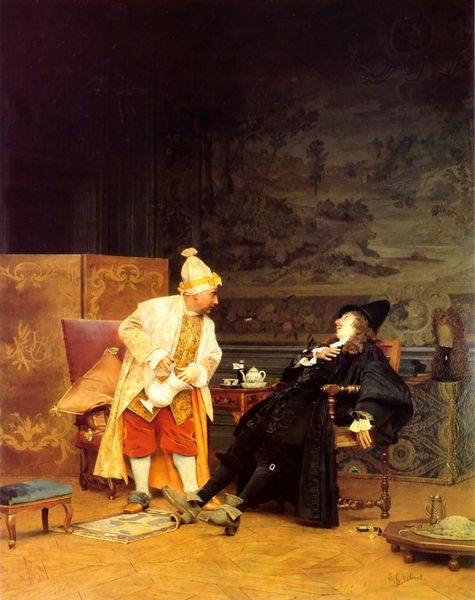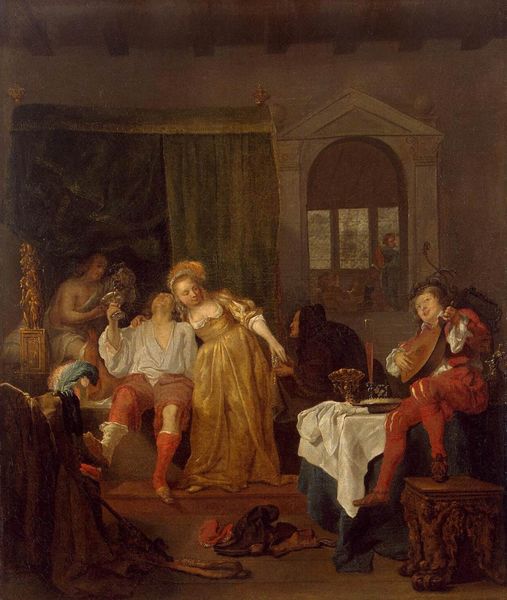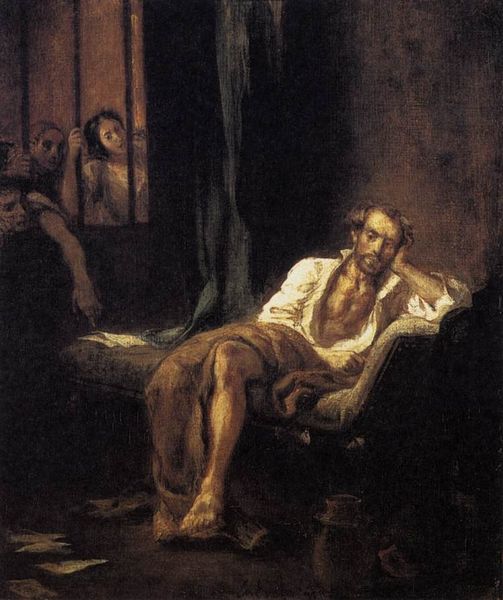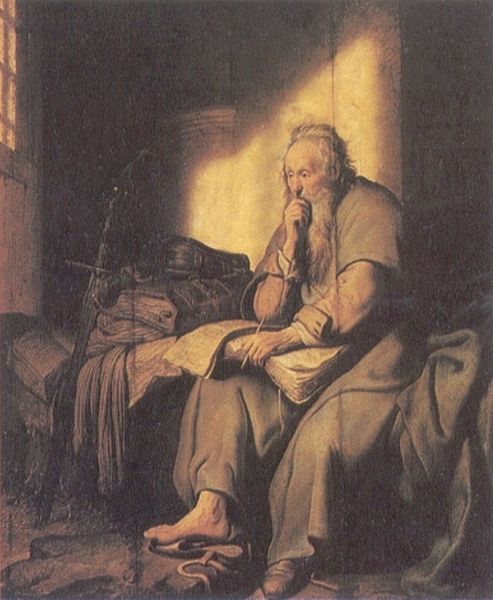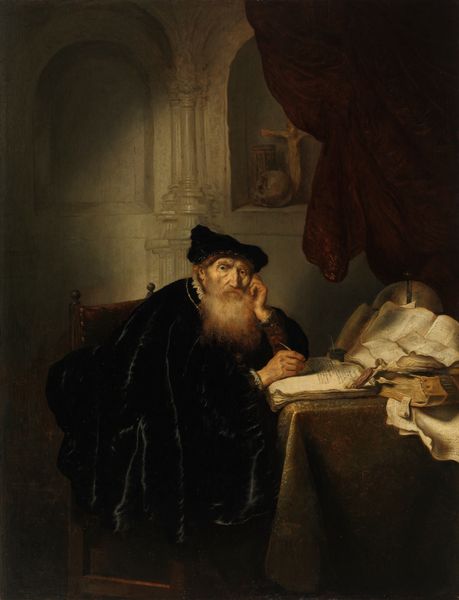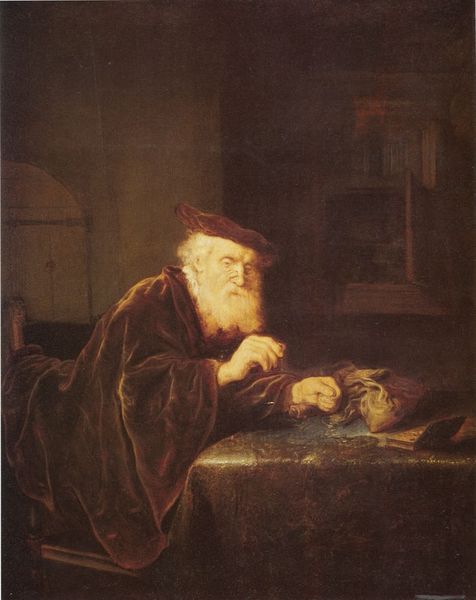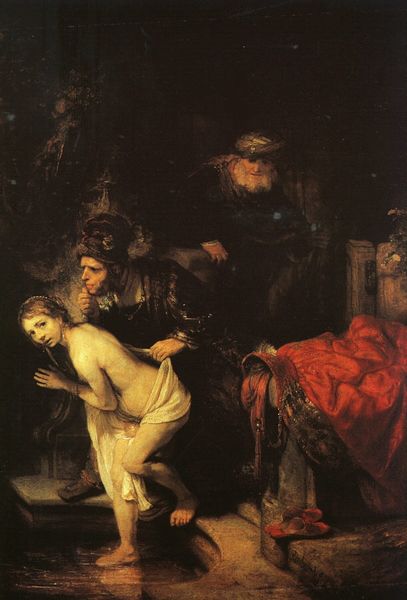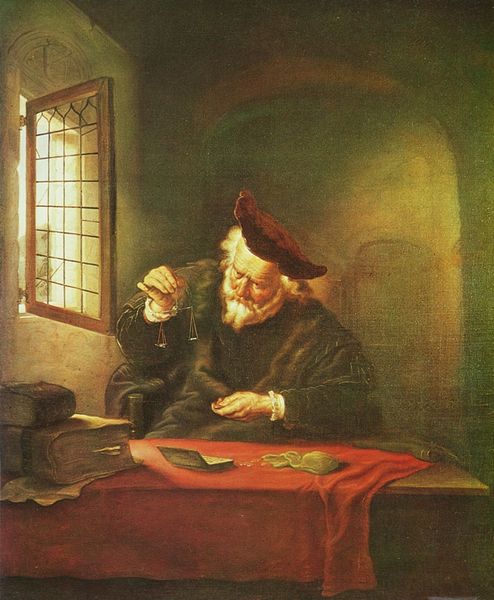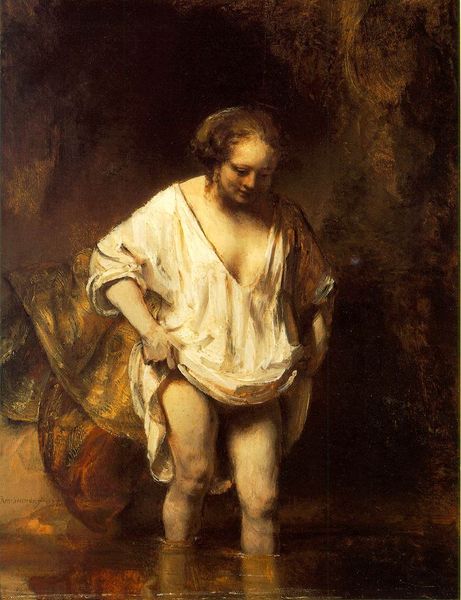
oil-paint
#
portrait
#
oil-paint
#
oil painting
#
romanticism
#
history-painting
Dimensions: 40 x 32 cm
Copyright: Public domain
Curator: Looking at Delacroix's “Michelangelo in his Studio,” painted around 1850 and now at the Musée Fabre in Montpellier, I’m immediately struck by the almost palpable atmosphere of solitude. It's as if the weight of artistic creation has settled heavily upon Michelangelo. Editor: Yes, that melancholy is quite distinct. But for me, it’s more than just the gloominess; the light emphasizes his face and contrasts it with the cold, stony figures around him. He looks like a Prometheus chained by his own genius. Is Delacroix suggesting something about the cost of greatness? Curator: I believe so. Think about the imagery here. The statue of the Virgin and Child is not just a symbol of artistic achievement, but a deeply resonant archetype. The act of creation, of bringing something new into the world, has always been linked to the maternal in art history. Does Michelangelo see himself, in that moment of weary inspiration, as enacting that same powerful role? Editor: An intriguing thought. It speaks to the grand Romantic idea of the artist as a nearly divine figure, laboring intensely to deliver beauty to the world. He is wrapped in a red cloak - perhaps signaling sacrifice, but I wonder, how much did Delacroix embellish or project into this image of Michelangelo to fulfill his own Romantic sensibilities? Curator: No doubt Romanticism deeply informs the vision, it's a history painting in its idealization. But Delacroix seems keen to capture the universal, timeless moment when creative force meets human doubt. The surrounding sculptures feel more than props; they speak to a long cultural dialogue. Editor: The whole setting almost becomes a mindscape. The statues echo, rather than support him. But that's the power of historical romanticism - to present a feeling of truth rather than literal fact. In the end, this "Michelangelo" makes us contemplate how creative legacies truly unfold and endure. Curator: True, this art presents Michelangelo as an everyman in history. Delacroix invites us to share in that heavy yet beautiful moment of solitude when creating great works. Editor: Indeed, it also highlights the changing role of the artist from craftsperson to Romantic visionary over the centuries, making "Michelangelo in his Studio" as much about Delacroix's era as Michelangelo’s.
Comments
No comments
Be the first to comment and join the conversation on the ultimate creative platform.
